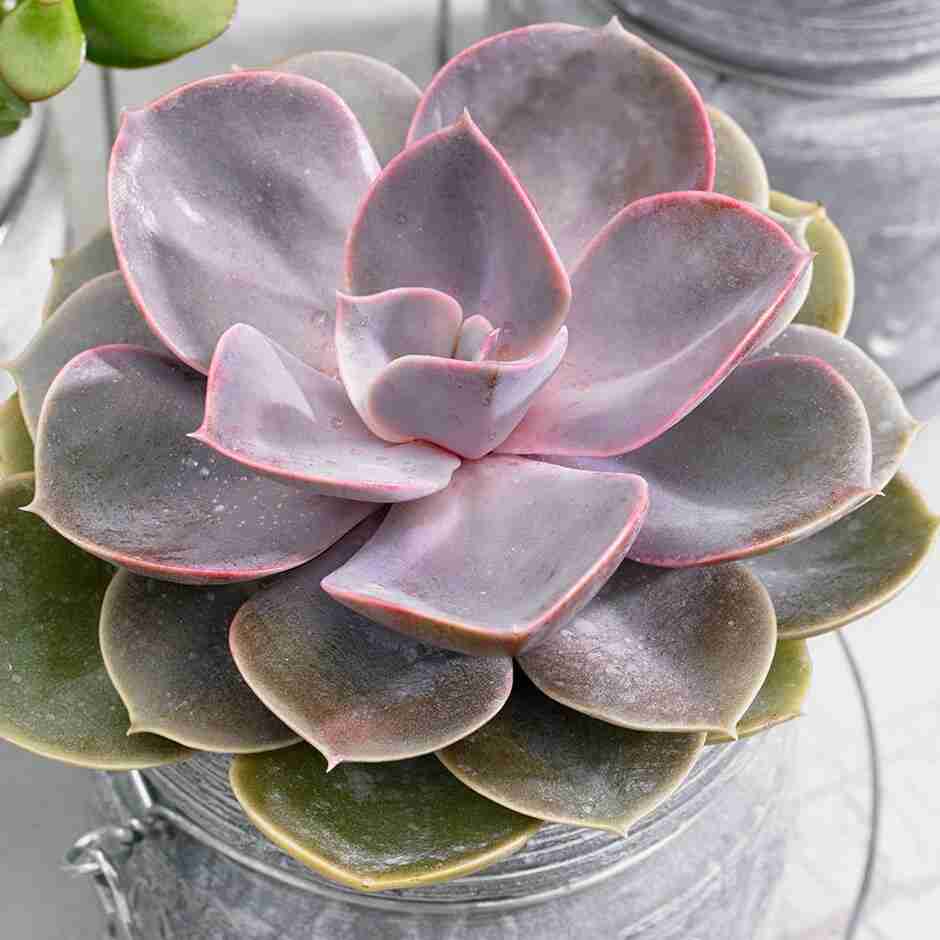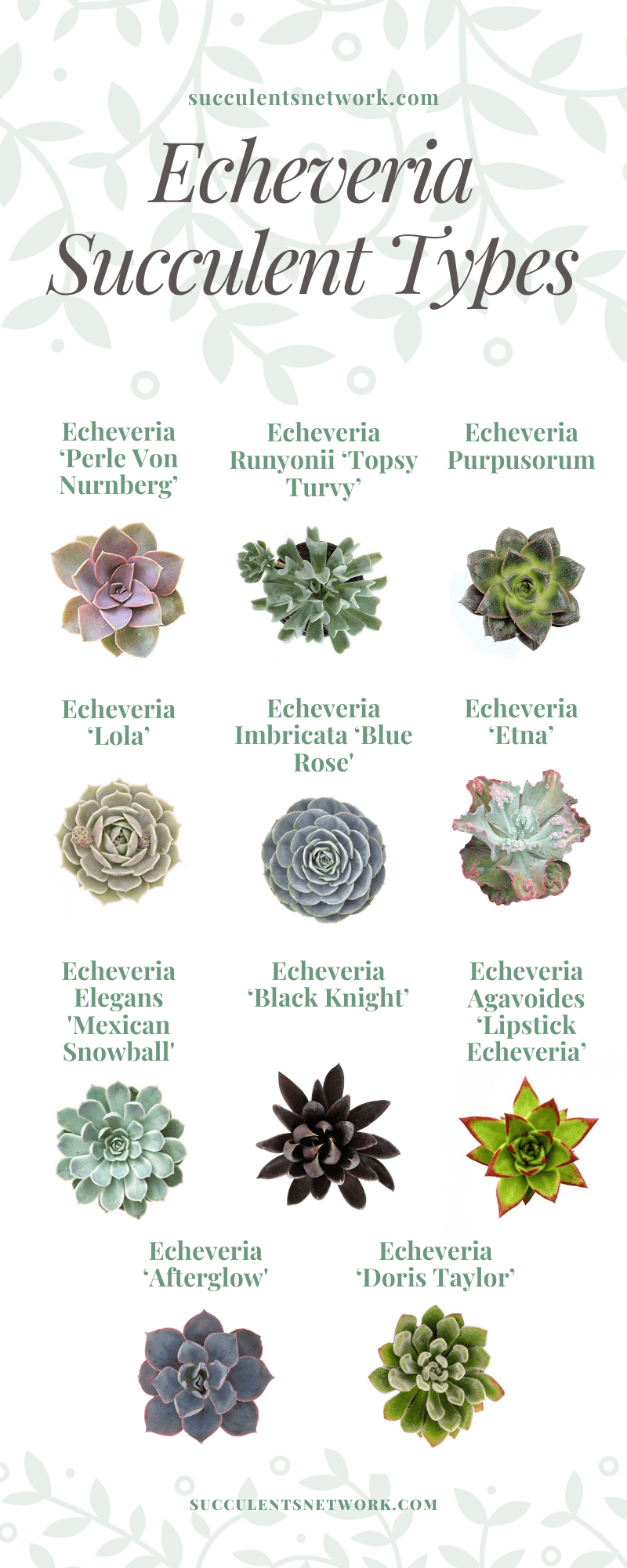
Picture by Amazon
Basic Info
Echeveria ‘Perle Von Nurnberg’ is one of the most common succulent types that you can find easily. It forms a rounded rosette with purple highlights. The purple-colored leaves edges will bring a fresh look to your succulent collection. When it blooms in summer, you can enjoy pink flowers with yellow interiors.
Scientific Classification
Family: Crassulaceae
Subfamily: Sedoideae
Tribe: Sedeae
Genus: Echeveria
Care and Propagation Information
Watering
Echeveria ‘Perle Von Nurnberg’ can be quite beautiful when it is well-taken care of. This succulent type needs typical watering as the other succulents. The watering method is very important to keep your Echeveria healthy. It should not sit on the water, and an excess amount of water should be avoided. The best way of watering is soaking and drying method this Echeveria. Yet, the succulent should be controlled to avoid overwatering.
General Care for Echeveria ‘Perle Von Nurnberg’
This succulent type is common and easy to care succulent which blooms in the summer. It is a nice addition to your outside garden. It is preferably grown outdoors. However, when there are dead leaves from the bottom, remove them. These dead leaves might cause pest problems especially mealybugs. (You can learn how to deal with mealybugs here.)
This page contains affiliate links.
Quick Facts:
- Pink flowers with yellow interiors
- Green leaves with purple-ish edges
- Loves Sun
- Preferably grown outdoors
- Grows 13 cm (5″) tall
- Grows up to 15 cm (6″) wide
- Zone 10 (Minimum -1.1° C – 30F)
- Can die easily if overwatered see: How to Water Succulent Plants
- Does not handle cold well
- Best propagated by leaves and cuttings
- Not harmful to animals and people
- Grows best during Winter season
Where to Plant
Echeveria ‘Perle Von Nurnberg’ succulents need strong light. When planting this Echeveria type in a garden, make sure it gets sunlight. Full to partial sun is the best for its growth. It is better to grow outdoor rather than indoor. (See how to plant succulents guide and follow the steps)
This type of succulent prefers a warm climate. It can survive at zone 10 which is around -1.1 °C (30 °F). If you live in a cold area, it is better to plant this succulent in an indoor environment. As long as it gets enough sunlight, the plant will grow happily.
How to Propagate Echeveria ‘Perle Von Nurnberg’
Echeveria ‘Perle Von Nurnberg’ can be propagated by leaves, beheading or cuttings. This succulent type does not require repotting often. Of course, the first-time repotting is essential when it is bought from the store.
Like all the other succulent types, a well-drained soil mixture is essential. If you want to know about well-drained soil mixtures, check How to Prepare Well-drained Soil for Succulent Plants.
Leaves
Echeveria ‘Perle Von Nurnberg’ propagates from the leaves. (Learn How to Propagate Succulents in detail here.) You should get a leave carefully from the mother plant. It should be a healthy leave that has no part left on the stem. In this way, the propagation will work. Before replanting, wait for a few days to allow it to callous. Use well-draining soil for your new succulent plant. Don’t forget to water when the soil dries out.
Cuttings
To propagate from cuttings, cut a leaf from the mother plant carefully with a clean knife or scissors. Before replanting, wait for a few days to allow it to callous. Use well-draining soil for your new succulent plant. Don’t forget to water when the soil dries out.
Beheadings
You can cut off the head of the succulent using clean scissors. Leave a few inches to the base to stay on the safe side. There should be enough stem on the cutting. Before replanting, wait for a few days so cutting and the base can dry. When the cutting is calloused, replant it. Don’t forget to water when the soil dries out.
Origin and Habitat
Echeveria ‘Perle Von Nurnberg’ is a hybrid plant produced in Germany.
Here you can see different Echeveria Types. For more information, visit the Succulent Types page.


